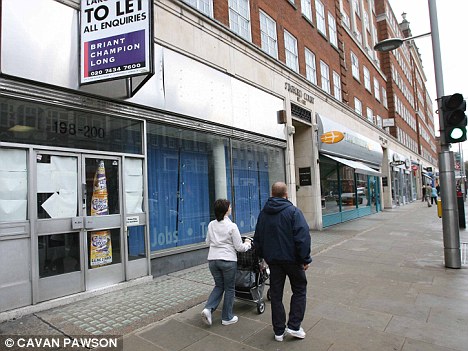It seems like every day we hear of another High Street Chain filing for administration or bankruptcy. In 2018 (more than ever) the high street is under threat.
Our shopping habits have changed so drastically in the past 10 years that the retailers are not able to maintain pace with the technology that seeks to usurp them.
Take Amazon for example, this company founded in 1994 has grown to be worth 4.1 Billion in 2017 from an online bookstore and support for their kindle e-book reader platform to an online store that sells…everything (well almost).
Granted there is still something about going to see the product you are buying in person however the transaction itself is often now online with better deals to be had. I am as guilty as the next person in doing this. For the last two years my Christmas Shopping was a breeze, I didn’t have to go out in the cold or fight with the queues. I just sat at my laptop with my wife in front of a Sunday afternoon movie and logged onto Very and did everything there. It all arrived and was wrapped (in the paper also bought online) and sent with cards (also bought online).
Planning Policy (at least locally) however has not moved on. It is still stuck in the misty eyed image of Britain in the 30’s where you went and did everything in the high street.
If you look at any planning policy for any town centre in the UK and compare it to the last iteration of that policy, or the one before that. Nothing has changed! In fact in Portsmouth they decided to make the City Centre Bigger! this notwithstanding a City Centre with 15% vacancy and a major retail development site that has been stalled since at least 2002.
Para 23 of the 2012 NPPF states:
23. Planning policies should be positive, promote competitive town centre environments and set out policies for the management and growth of centres over the plan period. In drawing up Local Plans, local planning authorities should:
recognise town centres as the heart of their communities and pursue policies to support their viability and vitality
define a network and hierarchy of centres that is resilient to anticipated future economic changes
define the extent of town centres and primary shopping areas, based on a clear definition of primary and secondary frontages in designated centres, and set policies that make clear which uses will be permitted in such locations
promote competitive town centres that provide customer choice and a diverse retail offer and which reflect the individuality of town centres
retain and enhance existing markets and, where appropriate, re-introduce or create new ones, ensuring that markets remain attractive and competitive
allocate a range of suitable sites to meet the scale and type of retail, leisure, commercial, office, tourism, cultural, community and residential development needed in town centres. It is important that needs for retail, leisure, office and other main town centre uses are met in full and are not compromised by limited site availability. Local planning authorities should therefore undertake an assessment of the need to expand town centres to ensure a sufficient supply of suitable sites
allocate appropriate edge of centre sites for main town centre uses that are well connected to the town centre where suitable and viable town centre sites are not available. If sufficient edge of centre sites cannot be identified, set policies for meeting the identified needs in other accessible locations that are well connected to the town centre
set policies for the consideration of proposals for main town centre uses which cannot be accommodated in or adjacent to town centres
recognise that residential development can play an important role in ensuring the vitality of centres and set out policies to encourage residential development on appropriate sites
where town centres are in decline, local planning authorities should plan positively for their future to encourage economic activity.
This is all well and good however it is often mis-interpreted at Local Plan Making Stage as a ‘maintain the status quo’ as it fails to identify how LPA’s should respond to a town centre in decline.
In academia the solution has been talked about for some time, compaction. This theory postulated by many more intelligent than I ( http://www.reading.ac.uk/PeBBu/state_of_art/urban_approaches/compact_city/compact_city.htm ) encourages the creation of more compact and therefore more efficient urban environments in order to foster regeneration. When applied to town centre’s this would seek the re-drawing of boundaries to make the retail part of the centre smaller. The effect of this would follow a logical chain:
- The centre is expansive with vacancies throughout
- The boundary of the retail centre is redrawn making the centre smaller
- The areas excluded are re-allocated as housing revival areas
- The building owners seek to redevelop their properties within the new HRA’s
- The existing retailers within the HRA’s move to the vacancies within the compacted town centre. If encouragement is required then CIL or S106 could be used from the development in the HRA to give rent grants of guarantee’s for retailers needing to move.
- All of the above would accord with Para 23 of the NPPF but would require a change in practice by the individual LPA.
The same compaction process however can be applied to individual shops without LPA involvement or a radical change in policy.
A large (former BHS or Poundworld) for example in a town centre in decline is typically arranged over two or more stories.
S55(1) and (2aii) of the Town and Country Planning Act allows us to sub-divide that larger unit into say three smaller units by internal alterations only. The ground and first floors are sub-divided accordingly and the units are compacted.
Smaller units are easier to rent in a town centre than larger units as they are more attractive to a wider range of users.
Class G of Part 3 of Schedule 2 of the General Permitted Development Order 2015 (As amended) allows us to then to convert the new upper floor spaces into up to 2 flats above each retail unit.
3 x 2 = 6
Para 23 of the NPPF recognises the importance of residential within a town centre and that’s why Class G exists.
Whenever I speak to developers and they ask ‘what is your favourite permitted development route’ I always give the same answer ‘Class G’. Hopefully you can see why!
I want our town centres to have a purpose however this will never happen if we do not grapple with the problems of today and plan properly for the future. Shopping has gone online, banking is going online ( https://news.sky.com/story/full-list-of-natwest-and-rbs-branches-which-will-close-11151127 ). At this stage the planning profession is waiting for the next big name to announce its departure. But for the property Investor that departure could be the next big opportunity.
Jonathan McDermott


